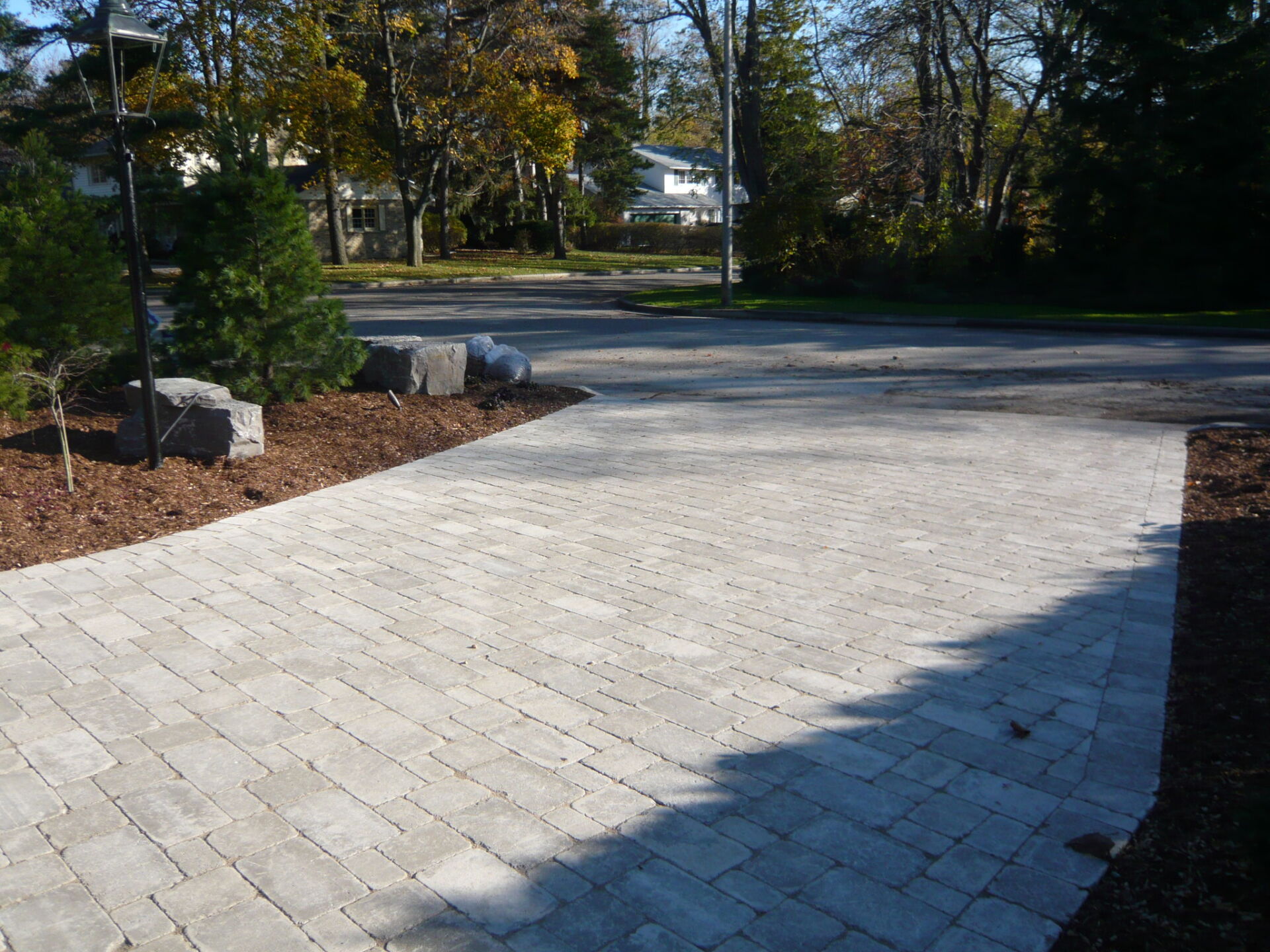Garden Clippings
Brick installation
Cracks in the driveway? Interlocking brick no longer level? Don’t put blame on the concrete, but understand that the fault lays squarely on the base underneath.
Here is a step by step guide to ensuring a stable and worry-free patio or walkway:
- Determine size and shape. Your simplest option is a square patio or straight walkway. But with imagination and a little extra effort you can arrive at a design that suits your home and taste. For inspiration look at magazines, visit friends, or browse the internet. Once your shape is determined, use ribbon, an extension cord, orange spray paint or flexible garden house to show the outer limits.
- Dig out sod. Use a sharp spade or mechanical sod cutter. If the soil is dry, water the grass a day before the job begins. You can reuse the sod elsewhere provided you don’t let it sit for more than a few days.
- Dig out topsoil. Most yards have 4 to 5 inches of soil over the undisturbed clay or sand below. When digging out soil, be sure to remove 6 to 12 inches beyond the outline of your patio. If your walkway will be 3 feet wide, you will be wise to prepare the base a minimum 4 feet wide.
- Add 4 to 5 inches gravel, bringing the level of gravel to an inch or two below the previous grade. Use good quality road gravel to achieve a solid base.
- Make sure the patio slopes away from the house. The minimum desired slope is 1 inch drop over 10 feet.
- Use a compactor tamper to pack down the gravel. Set a carpenter’s level or transit to ensure proper slope and grading. Pay additional attention to packing down outer edges.
- Add about 1 inch of bedding sand, screenings, or other fine grading material. Use a landscape rake to spread evenly. You might find it handy to use straight screeding poles to achieve a consistent grade.
- Time for brick. Keeping in mind your pattern, start by putting your first brick down at the house. Double check for height, and keep putting down brick until the job is done. Do your best to maintain straight lines. You will need a concrete saw to cut your edges.
- Install optional pave-edge. This will ensure the edges of your installation will stay intact.
- Sweep in polymeric sand. Carefully follow the instructions on the bag. Polymeric sand will help keep weeds and ants out of the joints.
- Backfill the edges with topsoil, grass or garden beds.


